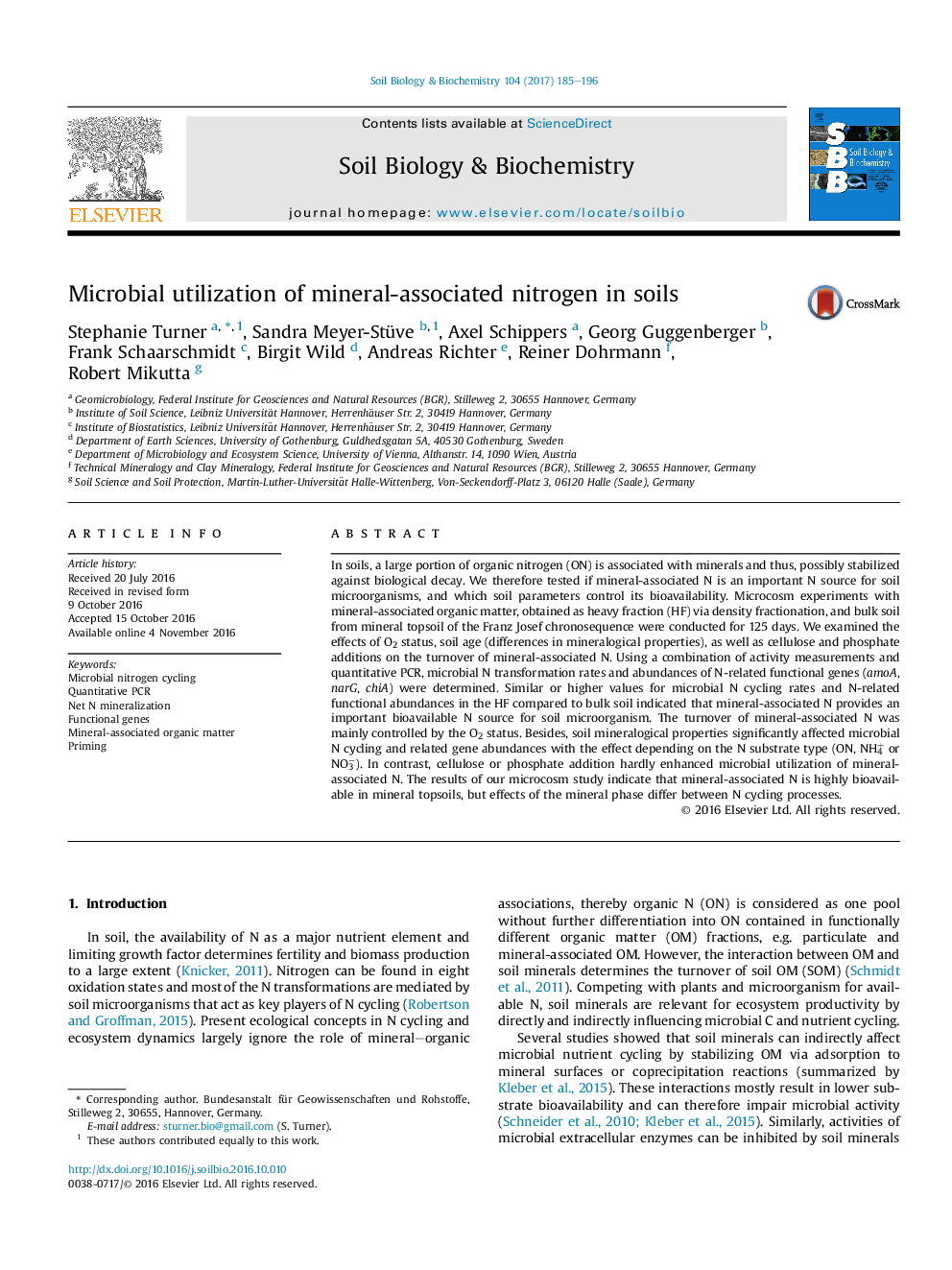| Article ID | Journal | Published Year | Pages | File Type |
|---|---|---|---|---|
| 5516459 | Soil Biology and Biochemistry | 2017 | 12 Pages |
â¢Microcosm experiments with mineral-associated organic matter were conducted.â¢Mineral-associated N provides a bioavailable N source for soil microorganisms.â¢Microbial turnover of mineral-associated N is mainly controlled by O2 status.â¢Cellulose or phosphate addition hardly enhance utilization of mineral-associated N.â¢Effects of the mineral phase differ between N cycling processes.
In soils, a large portion of organic nitrogen (ON) is associated with minerals and thus, possibly stabilized against biological decay. We therefore tested if mineral-associated N is an important N source for soil microorganisms, and which soil parameters control its bioavailability. Microcosm experiments with mineral-associated organic matter, obtained as heavy fraction (HF) via density fractionation, and bulk soil from mineral topsoil of the Franz Josef chronosequence were conducted for 125 days. We examined the effects of O2 status, soil age (differences in mineralogical properties), as well as cellulose and phosphate additions on the turnover of mineral-associated N. Using a combination of activity measurements and quantitative PCR, microbial N transformation rates and abundances of N-related functional genes (amoA, narG, chiA) were determined. Similar or higher values for microbial N cycling rates and N-related functional abundances in the HF compared to bulk soil indicated that mineral-associated N provides an important bioavailable N source for soil microorganism. The turnover of mineral-associated N was mainly controlled by the O2 status. Besides, soil mineralogical properties significantly affected microbial N cycling and related gene abundances with the effect depending on the N substrate type (ON, NH4+ or NO3â). In contrast, cellulose or phosphate addition hardly enhanced microbial utilization of mineral-associated N. The results of our microcosm study indicate that mineral-associated N is highly bioavailable in mineral topsoils, but effects of the mineral phase differ between N cycling processes.
Graphical abstractDownload high-res image (352KB)Download full-size image
